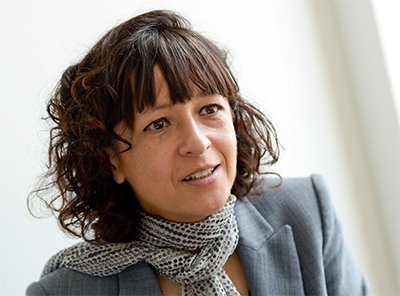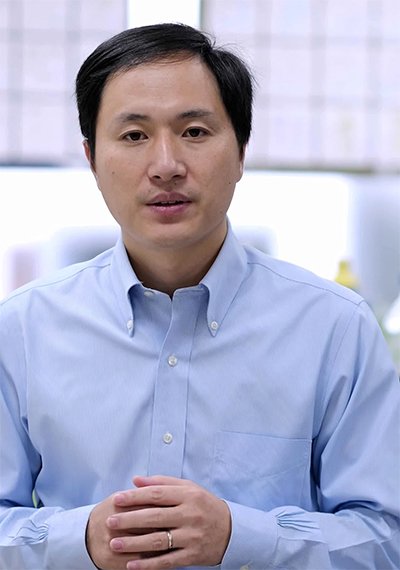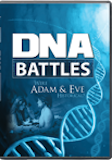CRISPR: A Clear-Cut Issue?
Does this popular gene-editing tool combat the curse or cut away at God’s design?
My generation likely remembers the 1997 movie Gattaca. The story takes place in a futuristic world in which parents go to geneticists to “design” their babies with certain desirable characteristics like eye and hair color, intelligence, and athletic ability. When the parents of the main character ask the geneticist about leaving some features to chance, he replies, “You want to give your child the best possible start. . . . Keep in mind, this child is still you, simply the best of you.” The premise of this futuristic Hollywood story is swiftly becoming reality with the development of genetic editing tools such as CRISPR/Cas9.
Bacteria use the CRISPR/Cas9 mechanism as part of their immune system to combat viral infections (yes, even bacteria can catch “colds”). Cas9 cuts up the viral DNA, which is then inserted between CRISPR sequences in the bacterial DNA. If it’s infected by the virus again, the bacterium more easily recognizes the virus and responds faster. Scientists have harnessed this power to seek out and correct genetic defects. CRISPR acts like a targeting device, and Cas9 acts like molecular scissors that cut the DNA at a specific location, disabling or repairing a defective gene. Developmental biologist Robert Reed said, “You can just point it at a place in the genome, and you can do anything you want at that spot.”1
Scripture tells us we are fearfully and wonderfully made, intricately knit together in our mother’s womb and known intimately by our Creator, right down to the strands of our DNA (Psalm 139:14–15). So is snipping at our DNA editing away God’s design? Far from a clear-cut issue, CRISPR requires Christians to discern when this technology can help scientists reverse the effects of the curse or when scientists are running dangerously with these molecular scissors.
What Are Some Positive Uses of CRISPR?

Photo PETER STEFFEN/DPA/ALAMY LIVE NEWS
Emmanuelle Charpentier (above) and Jennifer Doudna won a 2020 Nobel Prize for Chemistry for their research and development of CRISPR/Cas9.
In our fallen world, scientists and medical doctors are responsible to help “reverse the curse.” In that spirit of healing, scientists have touted CRISPR as a treatment for human disease, and true to their word, results from the first human trials released in late 2019 appear promising. Two individuals with blood disorders, one with beta thalassemia and the other with sickle cell disease, had stem cells removed from their bone marrow. The cells were edited with CRISPR to fix the genetic defects and then replaced in the patients. Neither patient has needed treatment for their disease in the months since the CRISPR treatment.
Other clinical trials are using T cells (a type of white blood cell essential to the immune system) armed with CRISPR to target and kill cancer cells. And a new clinical trial will inject CRISPR directly into the eyes of patients with inherited blindness.
The changes in all these individuals are somatic cell changes, meaning they only affect the individual and cannot be passed to future generations.
One particularly successful study showed that CRISPR could fix the genetic mutation that causes muscular dystrophy in dogs. This is similar to the mutation in humans that causes Duchenne muscular dystrophy (DMD), a disease which mainly affects boys and is typically fatal by midlife. DMD causes muscles to degenerate because of an altered protein called dystrophin that strengthens and protects muscles. Scientists believe that even a 15% increase in dystrophin levels would provide significant therapeutic benefits to those suffering from DMD.2 In the study, dystrophin in muscles reached levels as high as 90%.
Benefits Beyond Disease Cures
Beyond helping to cure disease, CRISPR has caught the attention of many industries racing to find ways that they can use genetic editing to improve our quality of life.
Compatible Organ Donors
Over 110,000 Americans are on a waiting list for an organ transplant. Many of those people will die without finding a matching donor. Because of their comparable size, pig organs can be used in place of human organ transplants, but viruses encoded in pig DNA could infect humans after the transplant. With CRISPR, scientists can cut out those viruses so pig organs could be safely transplanted into humans, saving more lives.
Improved Food
Scientists are also looking at CRISPR as a way to make crops more nutritional and weather resistant with a longer shelf life. Already the editing tool has been used to modify the groundcherry (a relative of the tomatillo), making the plant more compact and the fruit bigger. And perhaps the most pleasant prospect, scientists hope to use CRISPR to make cacao trees resistant to ravaging diseases to ensure the world’s chocolate production is not affected.

Scientists are using CRISPR to enhance the cacao plant’s resistance to diseases, protecting it against extinction.
Fighting Infections
CRISPR might be a weapon in our war against antibiotic resistant bacteria. Even so-called “last resort” antibiotics are no longer effective against some infections, since bacteria have gained more and varied resistance. Scientists want to use CRISPR to disrupt antibiotic resistant genes in bacteria to “resensitize” them, making the bacteria susceptible to antibiotics again.
Eliminating Disease Carriers
Summer nights might be a bit more peaceful in the future thanks to CRISPR. Scientists have used CRISPR in gene drives, which spread a genetic modification through a population at higher than normal rates of inheritance. This approach has been used to successfully decrease populations of mosquitoes (Anopheles gambiae) that transmit the disease malaria. Genetic changes make the female mosquitoes unable to bite and lay eggs. After several generations, with no normal females left to reproduce, the population dies out.
Is It Safe?
As with any treatment for human disease, we should question the safety before implementing CRISPR in widescale use. Scientists are concerned about two main types of effects: off-target and on-target effects. With off-target effects, CRISPR could change the DNA in locations other than the target. With on-target effects, CRISPR makes correct changes along with other unintended changes near the target. The genome (DNA in the nucleus of the cell) is very complex with layers upon layers of information. We do not fully understand all the ways in which information is encoded in DNA, so these off-target and on-target changes, although they appear very minor, may have destructive and even deadly consequences for the individual.

Researcher He Jiankui of China used CRISPR to modify a gene in twin girls in an attempt to make them resistant to AIDS.
Three recent studies revealed the real threat of these effects. In these CRISPR studies on human embryos (babies at early stages of development), scientists found multiple off-target and on-target effects, including thousands of rearranged or deleted base pairs of DNA, large disruptions in a chromosome, and even a missing chromosome. Fyodor Urnov, a geneticist and CRISPR researcher at the University of California, Berkeley, said, “This is a restraining order for all genome editors to stay the living daylights away from embryo editing.”3 Christians would agree with his warning about these dangers, but our concern goes much deeper. These human embryos are babies made in the image of God from the moment of fertilization. Using them for research purposes and subsequently destroying them is murder.
Clearly, CRISPR offers unprecedented possibilities for medical advancements and cures. But in our fallen world, sinful humans often find bad uses for good technology. Some fear that CRISPR could be used not only to cure human disease but also to make other changes resulting in so-called “designer babies.” Should parents be given the choice of choosing their baby’s eye color, height, intelligence level, athletic ability, and so on? It’s one thing to fix mutant genes that cause disease, but quite another to edit perfectly normal genes based on personal likes and dislikes.
In 2018, Dr. He Jiankui of China took an unprecedented step toward creating designer babies when he announced the birth of gene-edited twin girls. Using CRISPR, Jiankui modified a normal gene into a mutant form that prevents HIV from entering cells, hoping to make the girls resistant to AIDS. While this sounds beneficial, studies have shown that mutations in this gene make individuals more susceptible to other viral infections and may even decrease a person’s life expectancy. A seemingly helpful mutation in one place may have multiple negative consequences. Since CRISPR has been shown to make many off-target and on-target changes, this scientist and the girls’ parents made a reprehensible decision to experiment with human life.
Jiankui used CRISPR to make changes in the embryos so that all the girls’ cells carry the changes, including their eggs. Unlike somatic cell editing in which changes cannot be passed to future generations, these edits, called germline editing, in the girls mean the DNA changes will be passed on to their future children with many possibly unknown effects entering the human gene pool.
But Should We?
When Adam and Eve disobeyed God in the garden of Eden, sin entered the world, bringing genetic mutations that cause disease. As already noted, one of the main jobs of scientists and medical doctors is to help “reverse the curse.” Laurie Zoloth, a bioethicist at the University of Chicago Divinity School, said, “I want [CRISPR] to work. Everyone who thinks seriously about human suffering should really be wanting this to happen and should be optimistic . . . about medicine’s capacity and its power.”4
But as molecular biologist Natalie Kofler cautioned, “With such power in hand, we must ask: whose vision of the future are we trying to create?”5 Scientists who embrace an evolutionary worldview and believe that humans are merely highly evolved animals creep ever further away from the sanctity of human life. God created humans in his own image, giving us tremendous value and endowing us with the intelligence and ingenuity to create technology capable of modifying the threads of our being. But without the authority of God’s Word as the foundation, how and where will scientists and others set their boundaries for how they use CRISPR?
In 1 Corinthians 6:12, the Apostle Paul said, “All things are lawful for me, but not all things are helpful.” Just because we are capable of something doesn’t mean we should do it. The same could be said of CRISPR technology. Though Christians can support the safe use of CRISPR for combatting disease in a fallen world, we must be wary about scientists who would use CRISPR for purposes like designing children according to personal preference. Children are made in the image of God, not the image of man.
Using a Better Tool
CRISPR/Cas9 is a sort of molecular Swiss Army knife. Scientists have made many adjustments to the original CRISPR/Cas9 system to improve, modify, and expand its functions. Often the Cas9 is disabled (effectively “dulling” the scissors), and instead other proteins are fused to CRISPR so that different actions occur when it finds its target. For example, it can be used as a base editor. Bases are the individual components that comprise DNA. Base editing can make single base changes in DNA without cutting the DNA. This base editing could be effective in treating diseases like cystic fibrosis that are often caused by a single mutation in the DNA. CRISPR could also turn genes on and off by making epigenetic changes which affect the expression (behavior) of the DNA but not the actual DNA sequence.
Just like the Prime™ membership that offers free shipping for internet shopping in the USA, there’s a “prime” version of CRISPR/Cas9. Prime editing can make many different kinds of changes in the DNA. Scientists claim that it could fix “89% of the mutations that cause inherited human disease.”6 The prime editor is a combination of several proteins that also carries a copy of the change that needs to be made to the DNA. Though prime editing appears to be less error prone, the only drawback is its large size, which makes it hard to get into cells. Scientists will have to work out an effective delivery system.
Answers Magazine
January–March 2021
Meet the team of artists and writers behind the world’s most pro-life museum exhibit.
Browse Issue SubscribeFootnotes
- Tina Hesman Saey, “CRISPR Inspires New Tricks to Edit Genes,” ScienceNews, August 24, 2016, www.sciencenews.org/article/crispr-inspires-new-tricks-edit-genes.
- Leonela Amoasii, et al., “Gene Editing Restores Dystrophin Expression in a Canine Model of Duchenne Muscular Dystrophy,” Science 362: 86–91.
- Amanda Heidt, “CRISPR Gene Editing Prompts Chaos in DNA of Human Embryos,” Scientist, June 26, 2020, www.the-scientist.com/news-opinion/crispr-gene-editing-prompts-chaos-in-dna-of-human-embryos-67668.
- Tina Hesman Saey, “CRISPR Enters Its First Human Clinical Trials,” ScienceNews, August 14, 2019, www.sciencenews.org/article/crispr-gene-editor-first-human-clinical-trials .
- Natalie Kofler, “Gene Editing like Crispr Is Too Important to Be Left to Scientists Alone,” Guardian, October 22, 2019, www.theguardian.com/commentisfree/2019/oct/22/gene-editing-crispr-scientists.
- Megan Molteni, “A New CRISPR Technique Could Fix Almost All Genetic Diseases,” Wired, October 21, 2019, www.wired.com/story/a-new-crispr-technique-could-fix-many-more-genetic-diseases/.
Recommended Resources

Answers in Genesis is an apologetics ministry, dedicated to helping Christians defend their faith and proclaim the good news of Jesus Christ.
- Customer Service 800.778.3390
- © 2024 Answers in Genesis





